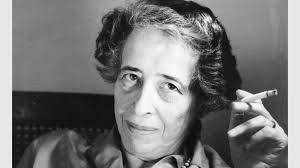Aristotle was the first philosopher to say that we are what we do. I have brilliant friends who disagree with this premise, but I believe it. All of my adult life I have begun new habits to reach goals or simply because it seemed like the right thing to do in the moment.
On May 14, 2020, I took the first of 19.9 million steps as I left Lancaster General Hospital and walked home from surgery. The surgery reassembled the 20-odd pieces of my shattered elbow to 70 percent of its former function.
I decided on that day I would walk 40 miles per week. Importantly, I decided I had to walk at least 40 miles per week, not and average of 40. More on that later.
Starting New Habits
For me, making habits often starts with a decision in the moment that lasts for years.
In February of 1986, I quit smoking. I had a cigarette after breakfast and never had another one. I started running a few months before I quit--about eight miles per week. The two weeks after I quit, I ran 65 miles so I would be less likely to start smoking again. Eventually running injuries led me to begin riding a bicycle.
In 1987, I went from riding 1.5 miles and gasping afterward in the spring to 40-mile rides in the fall. In 1992 and 1993 I rode from Lancaster to Canada. The bicycle habit reached 10,000 miles per year from 2002 to 2006. I still ride every week and whenever I can.
In the fall of 2007, when I re-enlisted in the Army, I started training for the Army fitness test. I ran sprints and shorter distance to increase my speed on the two-mile run--the Army standard distance. I also did 100 pushups and 100 situps every other day.
In November of 2012, my wife told me she was going to do an Ironman Triathlon. I decided I would too. I had never swam the length of a pool. I never swam at all except dog paddle as a kid and in Army Water Survival Training. I got a coach and swam five days a week until I could swim 2.5 miles without stopping (176 lengths of a 25-yard pool). I also had to run long distances.
Ending Old Habits
Since every week has just 168 hours and for much of this time I had a job, making new habits meant ending others. When I started riding a bicycle seriously, I sold the last of the 12 motorcycles I owned between 1972 and 1992. Motorcycles are so inherently dangerous that I practiced panic braking and high-speed figure 8s twice a month. When I rode the bicycle so much I did not ride the motorcycle regularly, I sold it.
I took my last Army fitness test in 2014. By 2015, I stopped doing pushups and sit ups and pretty much stopped swimming. By 2017 I stopped running. In 2019 I got a knee replacement, so I will never run again.
In 2016, I started doing Yoga. After two years, my bad knee kept me from practicing. I tried to start again after my 2019 knee replacement, but the other knee hurt, so yoga ended. Around 2019 I started Duolingo language practice and I started meditating. Both of those continue to this day.
What Do You Do?
We ask each other what we do for a living because what we do for 40 or more hours per week defines who we are. I retired nine years and quickly found it is much less defining to say what I did than what I do.
For the first years of my retirement I often answered parent when asked the "What do you do?" question. From 2015 to 2021 the first job in my life was either caring for my struggling sons or getting help with caring for my sons.
In 2022 I started making combat medical kits for soldiers in Ukraine. I worked in a warehouse in New Jersey 2 to 4 days a week for most of the year. Since November of 2022 I have had no central focus, just helping with Ukraine when I can. Later this year I will be all but full time working for President Biden, Senator Casey and all who support Ukraine. I will also work against all of Putin lovers.
After that I am likely to move to Panama for a while and make new habits. But not walking and riding. They will very much continue wherever I am. In the 46 months since I left the hospital, I have walked just over 10,000 miles or just over 50 miles per week. The weather in equatorial Panama is either hot or hot and raining so I should be able to walk and ride a lot.














